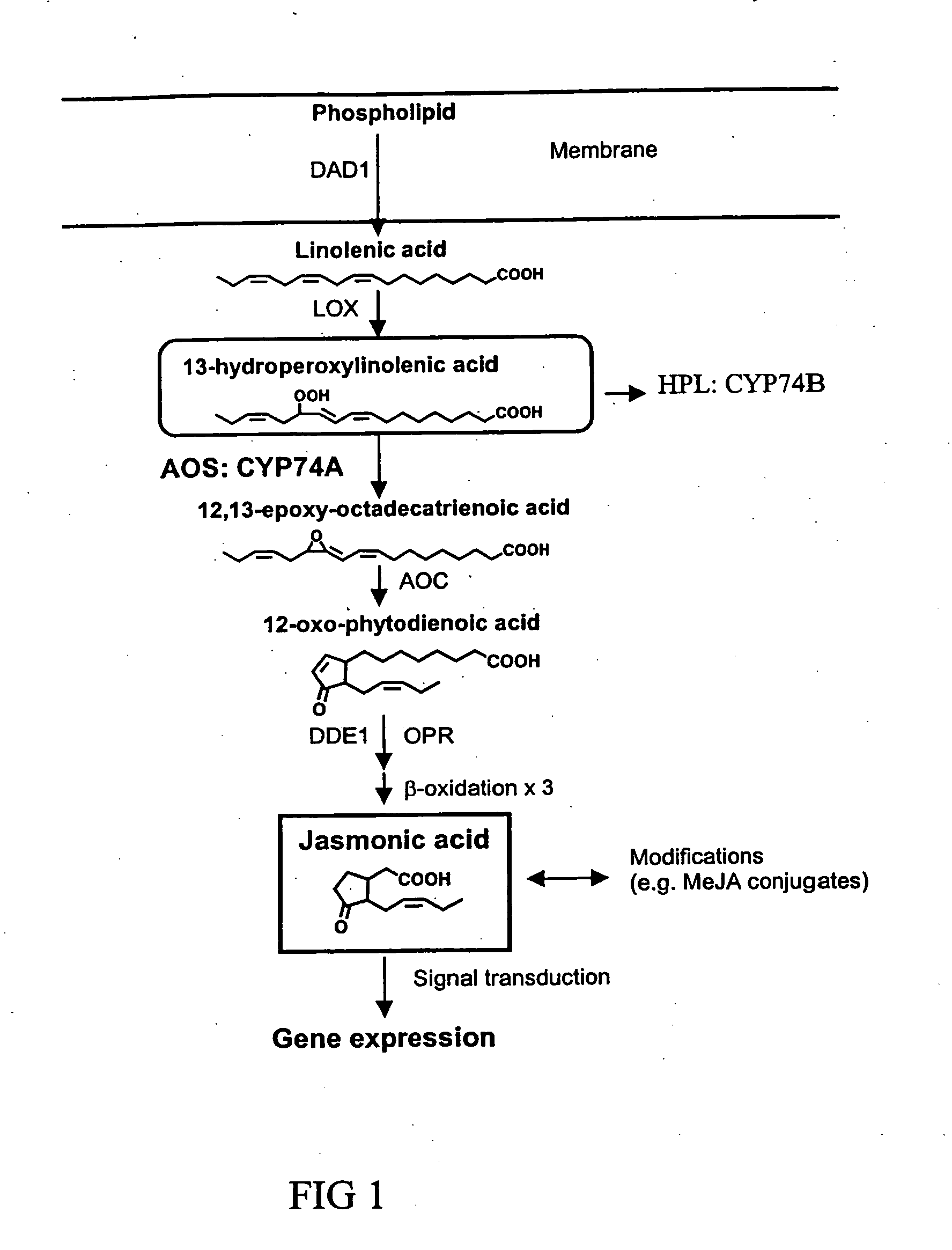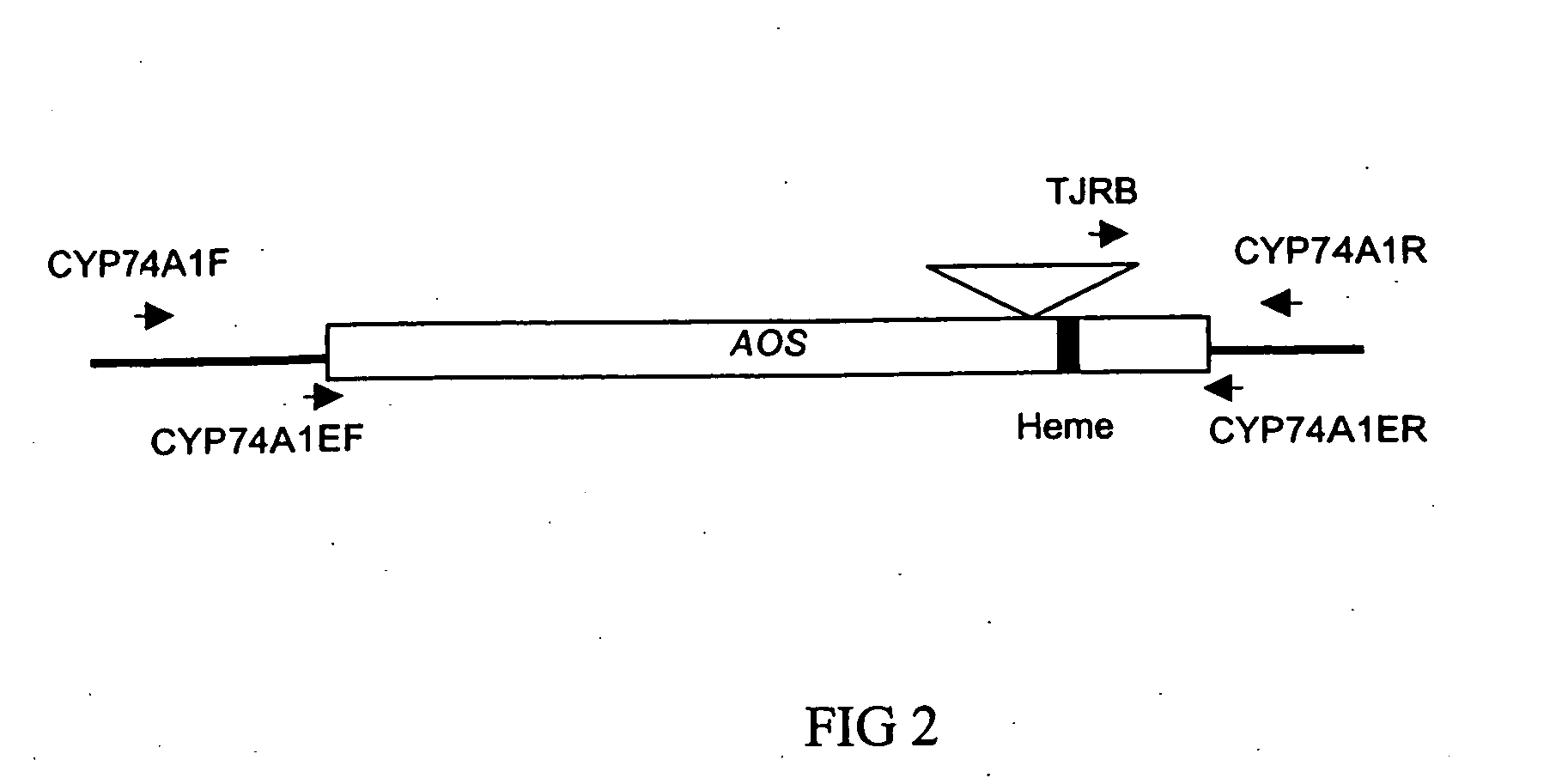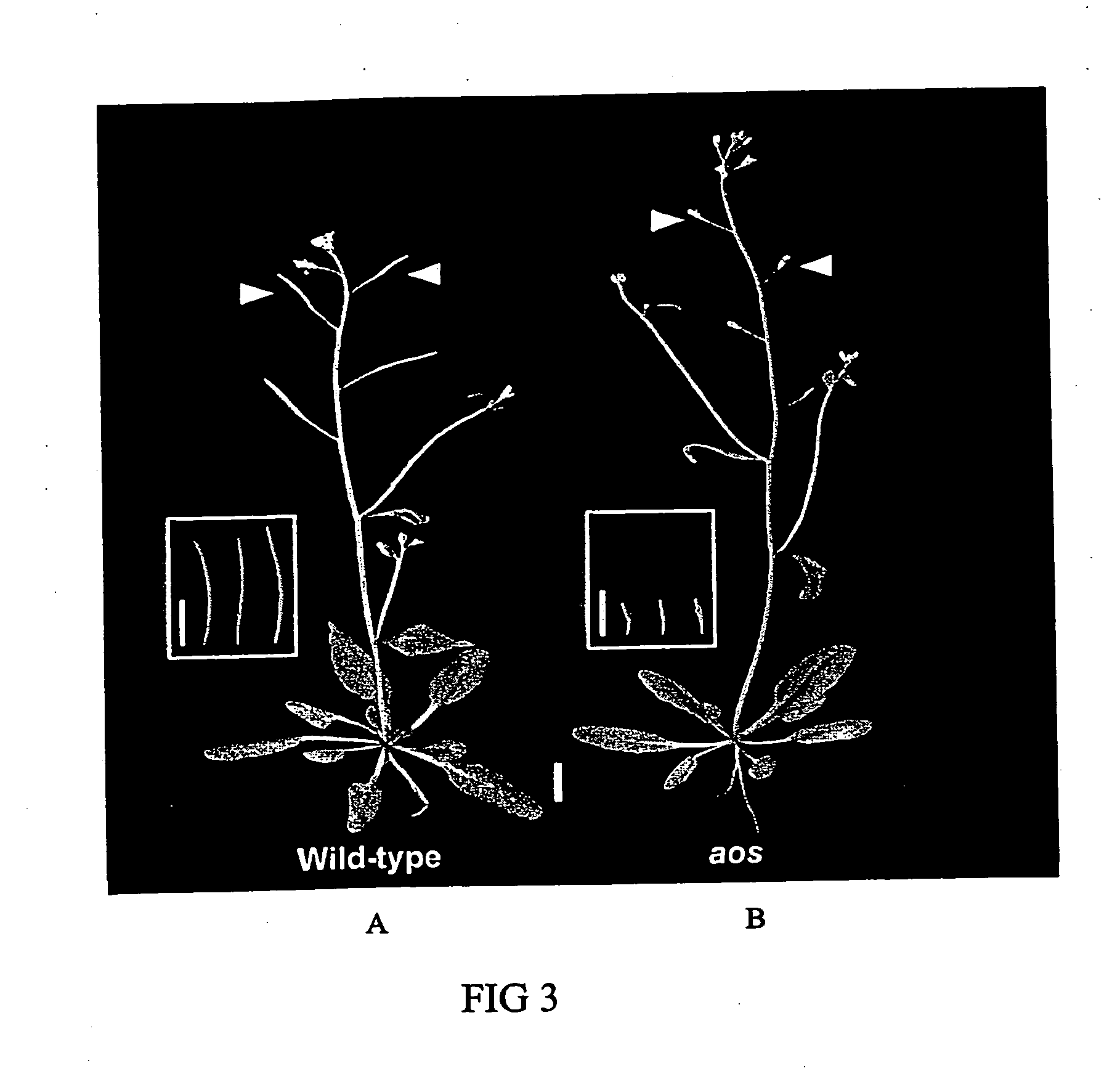Methods of controlling reproduction in plants
a technology of plant phenotype and phenotype, applied in the field of methods of regulating plant phenotype, can solve the problems of labor-intensive and expensive hybrid seed production, simple mechanical methods for hybrid seed production can only be used, and the emasculation of these crop plants is not a simple procedur
- Summary
- Abstract
- Description
- Claims
- Application Information
AI Technical Summary
Problems solved by technology
Method used
Image
Examples
example 1
Screening and Isolation of an Arabidopsis
Allene Oxide Synthase (AOS) Knock-Out Mutant
[0162] Allene oxide synthase (AOS), a cytochrome P450 (CYP74A), is of particular importance in jasmonate biosynthesis because it catalyzes the a critical step in the JA-specific biosynthetic pathway, the dehydration of 13-(S)-hydroperoxylinolenic acid to 12,13-epoxy-linolenic acid (allene oxide) (FIG. 1). In Arabidopsis, only one copy of the AOS gene is present and alternative enzymes have not been reported to catalyze this step (Laudert et al. (1996) Plant Mol Biol 31:323-335).
[0163] Using a PCR-based reverse genetics screening method with CYP74A- and T-DNA border-specific primers on 72,750 T-DNA insertion lines, a knock-out mutant for CYP74A, witch is located on the Arabidopsis chromosome 5, was isolated from the TJ lines (TJ1180). The T-DNA in these transformants confers kanamycin-resistance (KanR). Four kanamycin-resistant seedlings from this pool contained the appropriate PCR product when AO...
example 2
Co-Segregation of Kanamycin Resistance and CYP74A
[0166] TJ1180-1 was back-crossed to wild-type and F1 and F2 progeny were analyzed for segregation of the sterility and KanR phenotypes (Table 1). The 3:1 KanR:KanS segregation ratio of F2 progeny indicates a single T-DNA insertion with a functional kanamycin resistance marker. In addition, KanR wild-type fertile plants segregated in a 3:1 (wt:mut) manner for sterile plants indicating that sterility was caused by a recessive chromosomal mutation. The linkage of the sterile phenotype with the kanamycin resistance marker representing the T-DNA insertion was analyzed with 72 F2 segregating progenies. PCR analyses of 19 sterile F2 plants with AOS and border specific primers showed that all were homozygous for the aos T-DNA knock-out allele. Of 53 fertile plants, PCR analyses showed that 36 were heterozygous for the insertion while 17 plants lacked an insert. As such the segregation ratio of the F2 progeny was an acceptable 1:2:1 (wild-typ...
example 3
Whole Plant Phenotypes
[0169] A. Wild-Type and CYP74A Mutant Plants
[0170]Arabidopsis thaliana wild-type and CYP74A mutant plants were grown under standard culture conditions (see materials and methods).
[0171]Arabidopsis thaliana wild-type and CYP74A mutant plants were photographed 30 days after germination. A representative comparison of the plants is presented in FIG. 3. As shown in the figure, the 3rd and 4th siliques of wild-type (FIG. 3, Panel A, two open arrow heads) show normal development. Flowers of CYP74A1-1 mutant (FIG. 3, Panel B, two open arrow heads) fail to make siliques. The inset pictures show initial 3 siliques from the primary inflorescence of wild-type (Panel A) and CYP74A1-1 mutant (Panel B) at a week after flower opening. In the figure, the small white bar provides a scale where the bar=1 cm.
[0172] The plant phenotypes of the CYP74A is consistent with severe male sterile symptoms due to defects in anther and pollen production.
[0173] B. Expression Levels of C...
PUM
| Property | Measurement | Unit |
|---|---|---|
| pH | aaaaa | aaaaa |
| time | aaaaa | aaaaa |
| pathogen resistance | aaaaa | aaaaa |
Abstract
Description
Claims
Application Information
 Login to View More
Login to View More - R&D
- Intellectual Property
- Life Sciences
- Materials
- Tech Scout
- Unparalleled Data Quality
- Higher Quality Content
- 60% Fewer Hallucinations
Browse by: Latest US Patents, China's latest patents, Technical Efficacy Thesaurus, Application Domain, Technology Topic, Popular Technical Reports.
© 2025 PatSnap. All rights reserved.Legal|Privacy policy|Modern Slavery Act Transparency Statement|Sitemap|About US| Contact US: help@patsnap.com



